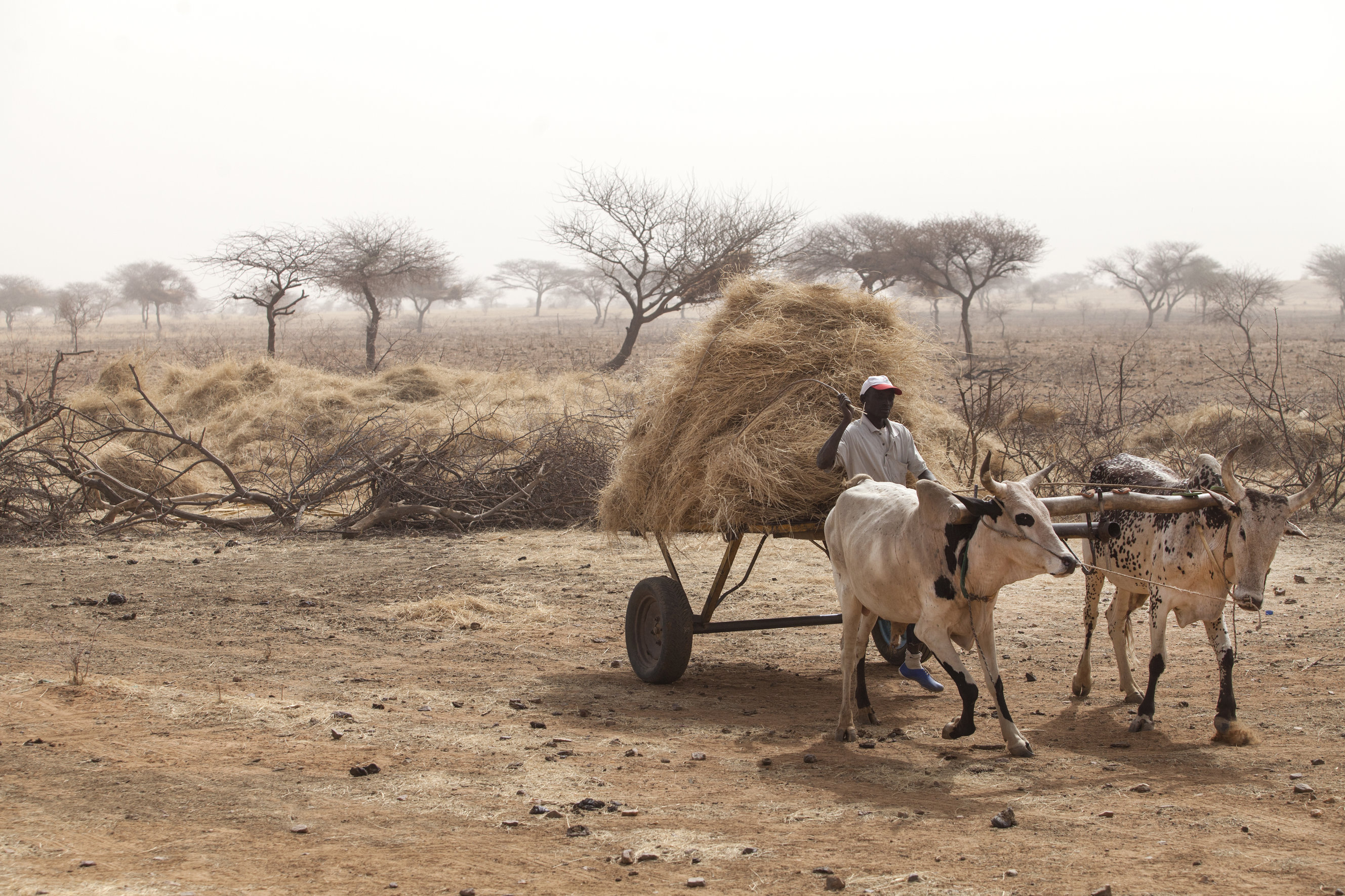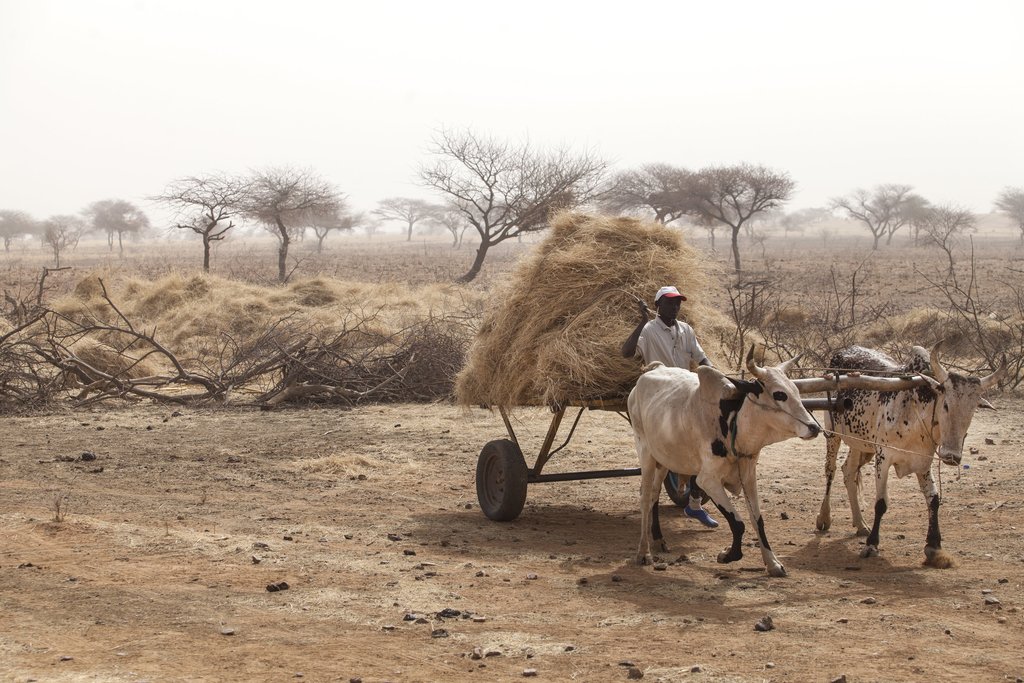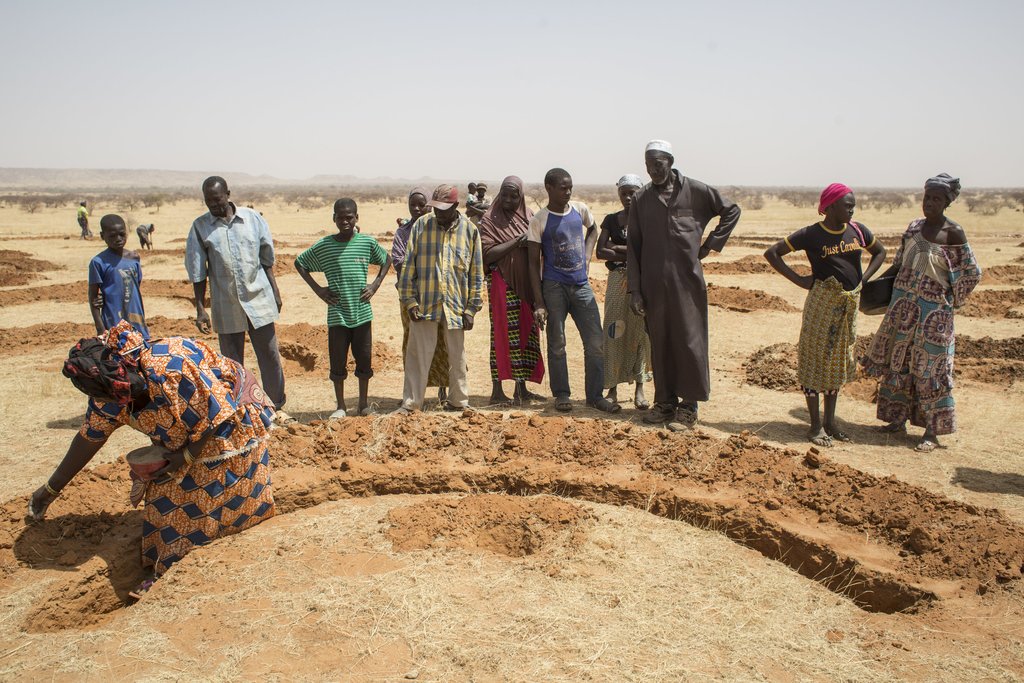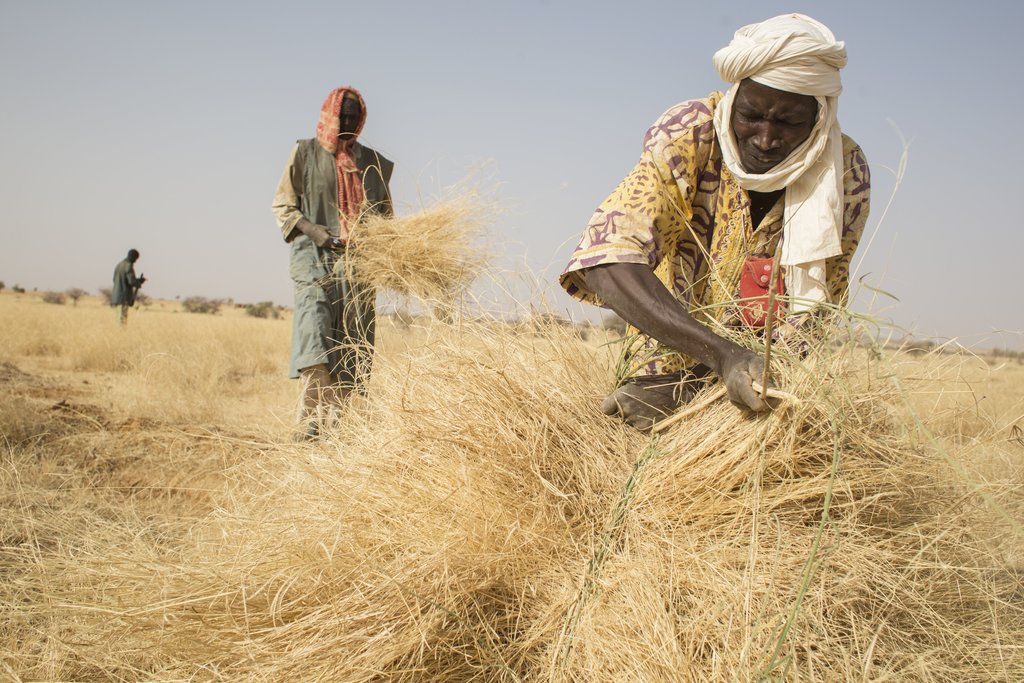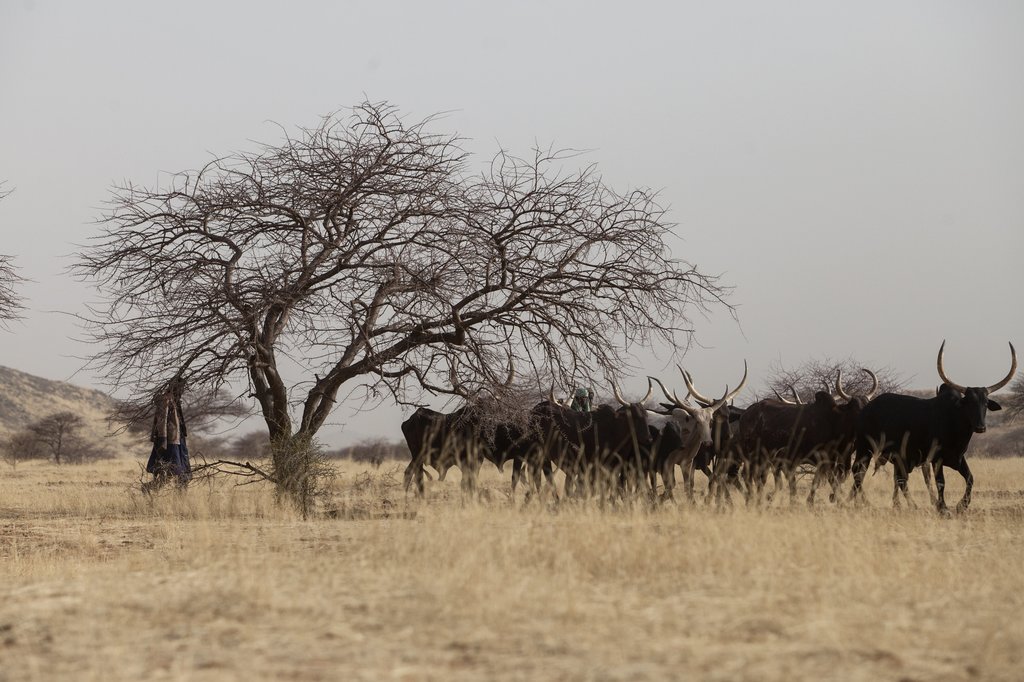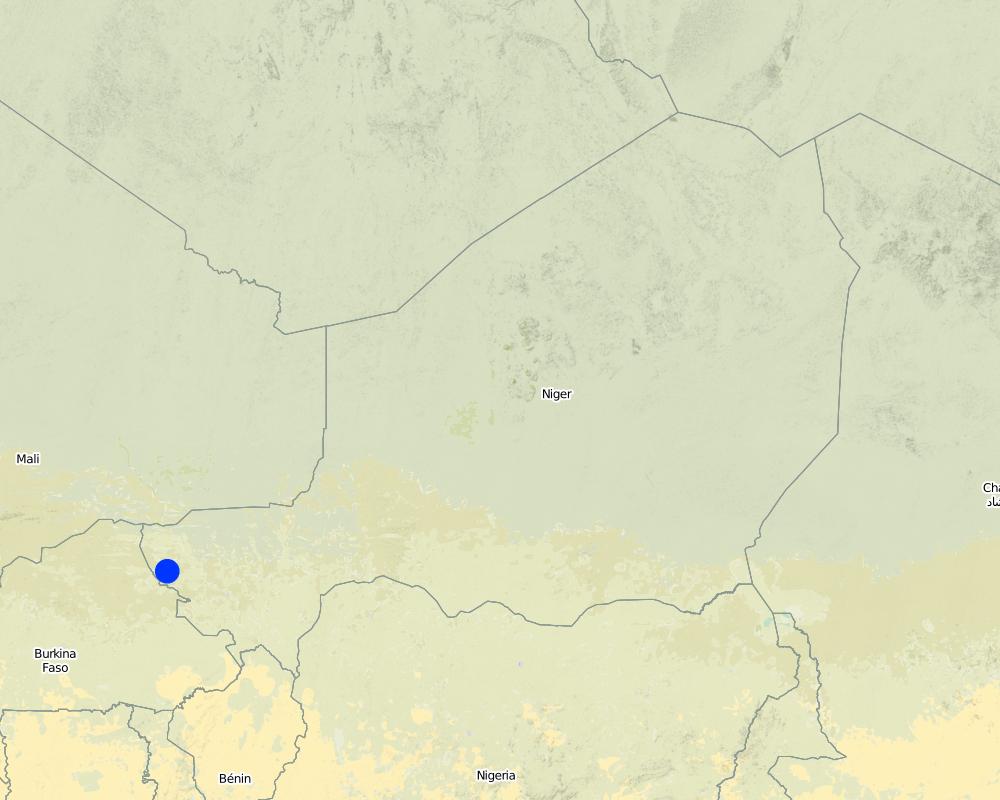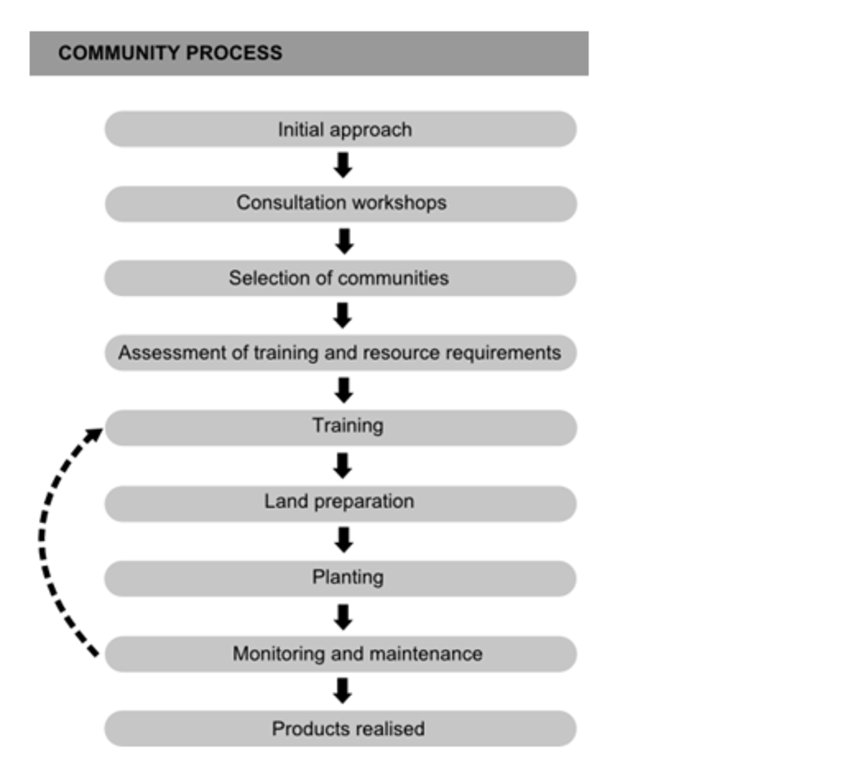Community participation in large-scale land restoration for Africa‘s Great Green Wall programme in Niger. [尼日尔 ]
- 创建:
- 更新:
- 编制者: Vivian Onyango
- 编辑者: –
- 审查者: Rima Mekdaschi Studer
approaches_2909 - 尼日尔
- Community participation in large-scale land restoration for Africa’s Great Green Wall programme: Nov. 2, 2021 (inactive)
- Community participation in large-scale land restoration for Africa’s Great Green Wall programme: July 4, 2018 (inactive)
- Community participation in large-scale land restoration for Africa’s Great Green Wall programme : May 13, 2018 (inactive)
- Community participation in large-scale land restoration for Africa’s Great Green Wall programme : April 26, 2018 (inactive)
- Community participation in large-scale land restoration for Africa‘s Great Green Wall programme in Niger.: April 24, 2018 (inactive)
- Community participation in large-scale land restoration for Africa’s Great Green Wall programme: Aug. 21, 2024 (public)
查看章节
全部展开 全部收起1. 一般信息
1.2 参与方法评估和文件编制的资源人员和机构的联系方式
SLM专业人员:
Sacande Moctar
moctar.sacande@fao.org
Forestry Policy and Resources Division (FOA)
意大利
有助于对方法进行记录/评估的项目名称(如相关)
FAO-Action Against Desertification有助于对方法进行记录/评估的机构名称(如相关)
Food and Agriculture Organization of the United Nations (FAO) - 意大利1.3 关于使用通过WOCAT记录的数据的条件
编制者和关键资源人员接受有关使用通过WOCAT记录数据的条件。:
是
2. SLM方法的描述
2.1 该方法的简要说明
The Food and Agriculture Organization of the United Nations (FAO) has been implementing a participatory approach to implement large-scale restoration of degraded land in the Sahel, by placing rural communities at the center. In the framework of the Great Green Wall initiative, well adapted useful native species of trees, shrubs, and fodder grasses are planted in agro-sylvo-pastoral land that responds to community needs and preferences and at the same time to the ecological suitability.
2.2 该方法的详细说明
该方法的详细说明:
The approach is implemented under FAO's Action against Desertification (AAD) programme in the Great Green Wall for the Sahara and the Sahel (GGWSSI); Africa's flagship initiative to combat the effects of climate change and desertification, and address food insecurity and poverty, bringing together more than 20 African countries with international organizations, research institutes, civil society and grassroots organizations. Through the GGWSSI, the vision is a mosaic of sustainable land use practices and productive landscapes across North Africa, the Sahel and the Horn.
Community participation in the Great Green Wall Restoration is a people-centered approach to rangeland management that puts communities at the heart of restoration efforts and focusses on their needs for useful plant species such as well-adapted native trees, shrubs and fodder grasses with a high resilience to drought and preferences for restoration in support of their livelihoods. Village communities decide on lands and on diverse species that they can use for food, to feed animals, for medical care and to produce economically valuable goods for local, national and even international markets, such as gum Arabic for example. Technically, AAD support the implementation of land restoration activities through provision of necessary equipment and strengthening the technical and functional capacities of individuals, communities, and organizations in restoration techniques and sustainable land management.
The main objectives of this approach are:
a) Poverty alleviation;
b) Ending hunger;
c) Improving resilience to climate change using a landscape approach.
The restoration approach is based on a five-step model:
• Communities: needs and requirements for restoration are determined through in-depth consultations with communities.
• Research: the quality seed is made available for the propagation of economically viable, locally adapted and bio-diverse material.
• Operational procedure: ensuring efficient operational restoration processes, including land preparation and management, assisted natural regeneration and planting.
• Monitoring: evaluating the field performance of species, as well as communal activities such as maintenance and management of restored areas.
• Capacity development: develop village technicians’ capacities in forest seed collecting and nursery techniques, planting, maintenance and management of restored areas, and development of plant products, marketing, and local business management.
2.3 该方法的照片
关于照片的一般说明:
The photos were taken under the FAO project GCP/INT/157/EC: Action Against Desertification is an initiative of the African, Caribbean and Pacific Group of States (ACP) to promote sustainable land management and restore drylands and degraded lands in Africa, the Caribbean and the Pacific, implemented by FAO and partners with funding from the European Union in the framework of the 10th European Development Fund (EDF).
2.4 该方法的视频
注释、简短说明:
https://www.youtube.com/watch?v=qVcMSeXZnJI
Over the next decade, 50 million people may be displaced by desertification - the result of climate change and the depletion of natural resources. Action Against Desertification, an initiative of the African, Caribbean, and Pacific Group of States is implemented by the Food and Agriculture Organization of the United Nations with the financial contribution of the European Union. It aims to restore the productivity of degraded forests and landscapes and enhance the resilience of people to climate change in 6 Great Green Wall countries in Africa as well as Haiti in the Caribbean and Fiji in the Pacific.
日期:
02/12/2015
位置:
Rome
摄影师的名字:
© FAO
注释、简短说明:
https://www.youtube.com/watch?v=prl1eaSvQCQ&feature=youtu.be
Land restoration in the Sahel is making degraded areas productive again, providing economic opportunities in a region where migration has become a tradition. Under FAO’s “Action Against Desertification” programme, these efforts are being expanded to six African countries. Land degradation around the Sahara is not yet irreversible.
日期:
18/07/2016
位置:
Rome
摄影师的名字:
© FAO
2.5 采用该方法的国家/地区/地点
国家:
尼日尔
区域/州/省:
Tillabery, Dosso and Tahoua
有关地点的进一步说明:
In Niger, the GGW covers all the eight Regions of the countries. Currently FAO’s Action Against Desertification project works in three Regions including Tillabery, Dosso and Tahoua, though the approach is used and expanding to all of the remaining 5 Regions, which are also implementing the GGW restoration programme.
注释:
The AAD land restoration approach has been successfully implemented with trans-boundary interventions in Niger, Burkina Faso, and Mali. For this documentation, the focus is on Tera, Niger.
Map
×2.6 该方法的开始和终止日期
注明开始年份:
2013
2.7 方法的类型
- 基于项目/方案
2.8 该方法的主要目的/目标
Key elements and aim of this approach include:
• That the right species planted in the right place.
• Promote the use of quality native forest and fodder seeds for restoration.
• Ensuring that a wide range of useful plant species is used or made available for use.
• Managing natural regeneration of species and planted areas through village management committees.
• Updating a species database for gene-pool traceability, monitoring, reporting and for future uses of data and information.
2.9 推动或妨碍实施本办法所适用的技术的条件
社会/文化/宗教规范和价值观
- 启动
The approach is people centered and builds up on traditional management of land and traditional ecological knowledge and techniques such as half-moon for rain water harvesting that facilitates improved seedling and crop establishment.
财务资源和服务的可用性/可得性
- 启动
Individuals can use finances to buy seeds. At community land, finances maybe needed to lease land needed for production of plant varieties needed, for hiring labour to take care of seedlings.
机构设置
- 启动
Better organization at local level enhances community participation and commitment to realize the interventions at large scale/community level.
参与者的的协作/协调
- 启动
There are various levels of collaboration needed for example in establishing land, in seed selection based on desired needs and also on labour provision.
Fundamentally, collaboration is key to agreeing on desired objectives.
法律框架(土地使用权、土地和水使用权)
- 启动
Secure access rights to land and water resources is a motivation for investing in reforestration.
政策
- 启动
national level policies can protect and ensure supply of seeds and seed varieties as well as access to natural resources such as land.
Additionally, policies such as those in support for Great Green Wall activities create an enabling environments on which these activities can be supported and take place.
土地治理(决策、实施和执行)
- 启动
Similar to legal framework above.
了解SLM,获得技术支持
- 启动
Knowledge around SLM contributes to maintenance and management of restored areas thus ensuring sustainability of activities. The programme has integrated existing/traditional SLM activities such as zaï/half-moon in capturing, retaining and saving water thus keeping soils moisturized and giving plants a chance to grow in an otherwise very dry environment.
市场(购买投入,销售产品)和价格
- 启动
Market access and increasing economic capacities of communities can enable active involvement in restoration especially when plant products can earn income thus facilitating local business management.
工作量、人力资源可用性
- 启动
Availability of labour facilitates activities such as forest seed collecting, nursery techniques, planting, maintenance and management of restored areas. Most of the work is done by women who prepare the soils and lead planting.
3. 相关利益相关者的参与和角色
3.1 该方法涉及的利益相关者及其职责
- 当地土地使用者/当地社区
Total project beneficiaries are 116,000 people (with over half women)
Age groups varied from 15 to 70 years.
Participants were villages including farmers, herders, traditional healers and herbalists.
Each intervention village has a village management committee set up for the GGW implementation activities. They contribute land and labour and village technicians are trained in large scale degraded land restoration techniques so that they can be self-sufficient at the end of the funding.
1. Defining needs, preferences of species and objectives for land restoration in degraded lands.
2. Trained on collection of seeds and on how to produce seedlings in village nurseries.
3.The involved communities also participated in the regular monitoring and evaluation of plots.
4. Participating in workshops including to agree on work plans
5. Communities were also source of rich traditional ecological knowledge
6. Supporting project through in-kind contributions such as labour and land
7. Representation in the steering committee
- 社区组织
Each intervention village has a village management committee set up for the GGWSSI implementation activities
- Contibute land, labour and village technicians to be trained on large scale land restoration techniques geared at self-sufficiency at the end of project life.
-Managing intervention sites including products such as fodder
-Collaborating with national and local administration
- SLM专家/农业顾问
Support to identification of land needed for restoration, seeds and management objectives of restoration.
- 研究人员
National seed centres.
1. Address the availability of good quality seeds for collection
2. Ensuring genetic diversity reflecting original provences of native species.
- NGO
Local NGOs and CBOs.
Local NGO's were trained on land restoration activities.
NGOs were also instrumental in discussions on scaling up the approaches and policy support for mainstreaming sustainable land management .
- 私营部门
Supplies of equipment and materials needed for restoration activities.
Mainly business related to procurement of goods and services.
- 地方政府
Local administration and national governments in the respective countries.
1. provide technical management and management if the operational team.
2. Mobilization of communities.
3. Part of the steering committee.
- 国家政府(规划者、决策者)
1. Ministry of Environment and Sustainable Development.
2. National Agency of the Great Green Wall.
3. National Forestry Seed Centre.
4. Local authorities (i.e. Mairies or Town halls) involved in Tillabery, Dosso and Tahoua regions.
- 国际组织
Royal Botanical Garden, Kew.
Technical support; botanical knowledge and information resources, and identifying priority species for the Great Green Wall.
3.2 当地土地使用者/当地社区参与该方法的不同阶段
| 当地土地使用者/当地社区的参与 | 指定参与人员并描述活动 | |
|---|---|---|
| 启动/动机 | 互动 | Communities local knowledge, needs and aspirations were the back-borne of the project. Communities were extensively consulted on species identification and prioritization based on needs including speed of return of products for the local communities, personal knowledge and inspirations. This was through questionnaires and village workshops. I bigger commitment and buy-in from the community was also a prerequisite for activities to start as they had to commit to contribute land and labour in-kind. As a matter of fact, selection of villages for restoration was based on among other things motivation and commitment by communities to participate in restoration activities. and community based structures and organization. |
| 计划 | 互动 | Extensive planning was done with communities before implementation e.g. to agree on planting time ( at onset of rains), use of traditional techniques and land scarification. |
| 实施 | 互动 | Implementation was done actively with communities who volunteered traditional knowledge and labour to the activities. This had built on the initiation; where species were selected and prioritized, planning of activities and later labour in preparation of land, setting up nurseries and trans-planting. |
| 监测/评估 | 互动 | Monitoring and field data collection on survival and growth of seedlings were carried out by trained village technicians in collaboration with the communities and technical institutions. |
3.3 流程图(如可用)
3.4 有关SLM技术选择的决策
具体说明谁有权决定选择要实施的技术:
- 所有相关参与者,作为参与式方法的一部分
解释:
This is a local initiative that uses traditional ecological knowledge and multi-purpose plant species (of known benefits to the local communities) for restoration.
Community participation, lifestyles and preferences and a careful analysis of ecological landscapes are carefully considered and then matched to suitable interventions. This similar approach has been applied by other projects in the GGWSSI region however although has not often been formally disseminated to wider audiences.
明确做出决策的依据:
- 对充分记录的SLM知识进行评估(基于证据的决策)
- 研究结果
- 个人经验和意见(无记录)
4. 技术支持、能力建设和知识管理
4.1 能力建设/培训
是否为土地使用者/其他利益相关者提供培训?:
是
明确受训人员:
- 土地使用者
- 现场工作人员/顾问
如果相关,请说明性别、年龄、地位、种族等。:
100 small-scale farmers were trained in 2017, in Natural Assisted Regeneration techniques and 40 farmers were trained in forest and fodder seed collection and the production of seedlings in village nurseries and in the management of planted sites.
培训形式:
- 课程
涵盖的主题:
Technical training was provided to villages in formal modules on how to collect quality seeds in defined seed zones. The training was provided by the national forest seed centres . The trainings were on seedling production and participatory forest management . Other areas covered included; added-value and the development of plant products (non-timber forest products), marketing and local business management to support income generation.
注释:
Apart from the restoration technical areas covered above, additional areas of training included; improving adult literacy, family health and nutritional standards. This was done together with specialized rural sector developers.
4.2 咨询服务
土地使用者有权使用咨询服务吗?:
是
指明是否提供了咨询服务:
- 在土地使用者的土地上
- 在固定中心
- workshops
说明/注释:
To re-introduce plant for large-scale restoration, effective use of seeds of wild species demands sufficient biological and technical knowledge on a big number of species to allow for collection, storage and germination of seeds and establishment of seedlings. In this approach therefore, the technical know-how of RBG Kew and related partnership with forest seed centres that allowed for collection of quality seeds.
4.3 机构强化(组织发展)
是否通过这种方法建立或加强了机构?:
- 是,非常
具体说明机构的强化或建立程度:
- 本地
- 区域
- 国家
说明机构、角色和职责、成员等。:
Institutions: National government; NGOs, CBOs,
Support to the national government who is the national agency for the GGW is the entry point. Through them ad based on national objectives, the project moves to a decentralized level. At the national level, capacities have been improved on monitoring and evaluation techniques; seed identification and selection and handling.
Local level: these are the implementing partners and do work on the ground. Their capacities have been improved on seed selection and restoration techniques and on data collection
Regional level: more collaboration, coordination and knowledge sharing on the GGW initiatives as well as peer to peer learning.
具体说明支持类型:
- 财务
- 能力建设/培训
- 设备
提供进一步细节:
Equipment: mainly for land preparation for planting and non-timber forest processing.
4.4 监测和评估
监测和评估是该方法的一部分吗?:
是
注释:
Regular monitoring is carried out by village communities involved in the restoration exercise. The activities include assessing seedling survival and growth and planted surface areas.
若是,该文件是否用于监测和评估?:
否
4.5 研究
研究是该方法的一部分吗?
是
明确话题:
- 社会学
- 经济/市场营销
- 生态学
提供进一步的细节,并指出是谁做的研究:
Through a questionnaire, communities define their needs and preferences of species, the objectives of land restoration in their available agro-sylvo-pastoral degraded lands. Results of this consultation are fed back to them after analyses by the project team (researchers, plant expertise, seed centres) for the feasibility, suitability and availability of the requested species. This allows commonly to agree on interventions, priorities and implementation plans with roles and responsibility from the communities as well as from the technical teams.
1. Sociology: prior research was done on social diversity of village communities on areas such as gender, age, profession among others to decide on village selections but also ensure required balance.
2. Economics/marketing: This was multi-faceted on one hand looking at community economic needs and priorities and also on how to value addition to non-timber forest products. The plant-use data received from respondents were classified according to the Economic Botany Data Collection.
These helped in deciding and prioritizing species according to community needs.
3. Ecology: GGW initiative is typically for drylands with challenges such as moisture retention. Thus the ecology of the place was studied to identify suitable plant species that would thrive under these conditions of course in combination with traditional technologies that have been developed to overcome the moisture deficits.
The botany of selected species was further examined in laboratories to first of all check their suitability to dryland environments and thereafter to ensure good quality seeds are used including ensuring genetic diversity
5. 融资和外部物质支持
5.1 该方法中SLM组成部分的年度预算
如果不知道准确的年度预算,请给出一个范围:
- 100,000-1,000,000
注释(例如主要的资助来源/主要捐助者):
Action Against Desertification is implemented by FAO and partners with funding from the European Union in the framework of the 10th European Development Fund (EDF). The GGWI under AAD in Niger is funded up to around 1.5m USD for the four years of the project.
5.2 为土地使用者提供财政/物质支援
土地使用者是否获得实施该技术的财政/物质支持?:
是
如果是,请具体说明支持的类型、条件和提供者:
Finances are needed for purchasing equipment, seeds were also provided, seed testing to establish the desired type/species.
5.3 对特定投入的补贴(包括劳动力)
- 劳动力
| 程度如何 | 对补贴做出具体说明 |
|---|---|
| 部分融资 | Local communities shared some tasks such as during planting period the project provided lunch. |
- 设备
| 具体说明哪些投入得到了补贴 | 程度如何 | 对补贴做出具体说明 |
|---|---|---|
| 机械 | 部分融资 | Provided such as arable tools, carts for transportation. |
| 工具 | 部分融资 | Arable tools for planting. |
- 农业
| 具体说明哪些投入得到了补贴 | 程度如何 | 对补贴做出具体说明 |
|---|---|---|
| 种子 | 部分融资 | Training was provided on a collection of native forest seeds that were then bought from them (communities thus earning an income for communities). |
| Organic manure | Training to do and collect composts. | |
- 建筑
| 具体说明哪些投入得到了补贴 | 程度如何 | 对补贴做出具体说明 |
|---|---|---|
| 石料 | 部分融资 | For storage facilities. |
如果土地使用者的劳动力是一项重要的投入,那么是不是:
- 获得其他物质支持
注释:
In partnership with WFP there was collaboration on food for assets and incentives from the project such as trainings on preparation of vegetable gardens..
5.4 信用
是否根据SLM活动的方法给予信用值?:
否
5.5 其它激励或手段
是否有其他激励措施或工具用于促进SLM技术的实施?:
是
如果是,请具体说明:
Functional capacity building village communities for example in management of restoration sites and development of community forest products
6. 影响分析和结论性陈述
6.1 方法的影响
该方法是否有助于当地土地使用者,提高利益相关者的参与度?:
- 否
- 是,很少
- 是,中等
- 是,支持力度很大
The project supports the communities to improve productivity of their land in direct consultation with them while benefiting from trainings with changes recorded in diversity of biomass in community plots and lands.
这种方法是否有助于基于证据的决策?:
- 否
- 是,很少
- 是,中等
- 是,支持力度很大
Substantial improvement is already recorded on state of land in the last 2 years.
该方法是否帮助土地使用者实施和维护SLM技术?:
- 否
- 是,很少
- 是,中等
- 是,支持力度很大
Trainings were provided on various aspects such as seed selection and collection.
该方法是否提高了SLM的协调性和成本效益?:
- 否
- 是,很少
- 是,中等
- 是,支持力度很大
The project is not funding all aspects yet building sustainability through the direct capacity development and participation by communities.
该方法是否调动/改善了使用财务资源实施SLM的途径?:
- 否
- 是,很少
- 是,中等
- 是,支持力度很大
1. Village technicians have been used by other projects in the area in SLM and also by the government while getting remuneration. 2. Communities are able to sell native restoration seeds to other projects in the region and to the government.
该方法是否提高了土地使用者实施土地管理的知识和能力?:
- 否
- 是,很少
- 是,中等
- 是,支持力度很大
Through trainings and capacity development e.g. on large-scale land preparation for planting and seed selection.
该方法是否提高了其他利益相关者的知识和能力?:
- 否
- 是,很少
- 是,中等
- 是,支持力度很大
1. Governments; training of technicians including on specialized tools, training on monitoring and evaluation of SLM and restoration impacts. 2. CBOs and local administrations. regional organizations such as CILSS-Agryhmet were also trained on the above.
该方法是否建立/加强了机构、利益相关者之间的合作?:
- 否
- 是,很少
- 是,中等
- 是,支持力度很大
The village technicians and trained seed collectors are now organized in a regional union for restoration seed supply.
该方法是否缓解了冲突?:
- 否
- 是,很少
- 是,中等
- 是,支持力度很大
With the increasing of fodder production, pressures on other grazing areas have gone slightly down.
Disadvantaged groups not present at village level.
该方法是否改善了性别平等并赋予女性权力?:
- 否
- 是,很少
- 是,中等
- 是,支持力度很大
Yes; gender equality is taken into consideration such as women representative in each village management community.
该方法是否鼓励年轻人/下一代土地使用者参与SLM?:
- 否
- 是,很少
- 是,中等
- 是,支持力度很大
As income is coming in from restoration activities, it has been encouraging young people to consider SLM as in income generating opportunity.
该方法是否改善了阻碍SLM技术实施的土地使用权/用户权问题?:
- 否
- 是,很少
- 是,中等
- 是,支持力度很大
Communities now see more value in restoring degraded land previously neglected and there is tenure agreements with local administration. Land tenure had been insecure for local communities but now rights of access and use have been delivered by local administrations to local communities guaranteeing that restoration areas belong to communities thus ensuring sustainability also as a community see ownership of the investments.
该方法是否改善了粮食安全/改善了营养?:
- 否
- 是,很少
- 是,中等
- 是,支持力度很大
1. Farming in restored areas allows for more crop production. 2. Fodder production is feeding livestock improving production of milk and meat.
该方法是否改善了市场准入?:
- 否
- 是,很少
- 是,中等
- 是,支持力度很大
1. Seeds and fodder are being sold by local communities to other projects, governments and communities.
该方法是否改善了供水和卫生条件?:
- 否
- 是,很少
- 是,中等
- 是,支持力度很大
Not within scope.
该方法是否带来了更可持续的能源使用?:
- 否
- 是,很少
- 是,中等
- 是,支持力度很大
Out of scope.
该方法是否提高了土地使用者适应气候变化/极端情况和减轻气候相关灾害的能力?:
- 否
- 是,很少
- 是,中等
- 是,支持力度很大
The project aim is to increase resilience of natural capital and people living in drylands while being able to adapt to climate change.
该方法是否会带来就业、收入机会?:
- 否
- 是,很少
- 是,中等
- 是,支持力度很大
In seed sales, crop production, income earning from employment of technicians.
6.2 土地使用者实施SLM的主要动机
- 增加生产
Increased land productivity from restored land.
- 增加利润(能力),提高成本效益比
Improved yields and harvest.
- 减少土地退化
Restored land provide more opportunities to land users.
- 声望、社会压力/社会凝聚
Restoration of agro-sylvo-pastoral systems promoted cohesion across different user groups and provided benefits.
- 加入运动/项目/团体/网络
Desire to be part of community based organization and through these, management of restored lands is also possible.
- 环境意识
Improved biodiversity, wildlife and link to community cultures and lifestyles was a motivator.
- 习俗和信仰,道德
Linked to environmental above; need to protect and preserve wildlife and biodiversity.
- 提高SLM知识和技能
Project provided technical capacity development such as water harvesting and rice species to plant in right places motivated communities to participate.
- 冲突缓解
Increasing biomass in agro-sylvo-pastoral systems reduced conflicts between pastoralists and farmers.
6.3 方法活动的可持续性
土地使用者能否维持通过该方法实施的措施(无外部支持的情况下)?:
- 是
若是,请说明如何维持:
The capacity being developed should help farmers continue without external intervention e.g. training in collecting planting material, planting technique and in managing the plot enable continuity and the capacities developed stay within the community examples; the trained village technicians.
6.4 该方法的长处/优点
| 土地使用者眼中的长处/优势/机会 |
|---|
| Builds on existing knowledge such as the use of zhai and pit planting. |
| Income generation e.g. from selling of seeds to governments and other land users. |
| Helping achieve communities specifics objectives such as increasing tree cover. |
| 编制者或其他关键资源人员认为的长处/优势/机会 |
|---|
| The consultation process and the mutual trust built over time, which make people buy-in the programme and feel the ownership of the activities on the ground. |
| The technical and scientific feedback answers to priorities and preoccupation of land users in terms of restoration objectives. |
| The involvement of people in monitoring and management of their planted sites as they contribute their lands and labour. |
6.5 该方法的弱点/缺点以及克服它们的方法
| 土地使用者认为的弱点/缺点/风险 | 如何克服它们? |
|---|---|
| Inability to adequately influence donor plans. | Frequent consultations. |
| 编制者或其他关键资源人员认为的弱点/缺点/风险 | 如何克服它们? |
|---|---|
| Inability to address all the needs of the beneficiaries. Such as demand for water supply in dry seasons restoration while project focusses on rainfed restoration. | Increased dialogue on interventions across sectors such as with donors for more systematic and integrated approach. |
| Lack of flexibility in implementation to consider some of the upcoming demands of communities. |
7. 参考和链接
7.1 方法/信息来源
- 实地考察、实地调查
7.2 参考可用出版物
标题、作者、年份、ISBN:
FAO. 2015. Global guidelines for the restoration of degraded forests and landscapes in drylands: building resilience and benefitting livelihoods. Forestry Paper No. 175. Rome, Food and Agriculture Organization of the United Nations.
可以从哪里获得?成本如何?
UN-FAO
标题、作者、年份、ISBN:
Community participation at the heart of Africa’s Great Green Wall Restoration model. Authors: M. Sacande, N. Berahmouni and S. Hargreaves. In Unasylva. Volume 66 2015/3
可以从哪里获得?成本如何?
UN-FAO
7.3 链接到网络上可用的相关信息
标题/说明:
Action Against Desertification (FAO)
URL:
http://www.fao.org/in-action/action-against-desertification/en/
标题/说明:
Building Africa’s Great Green Wall: Restoring degraded drylands for stronger and more resilient communities
URL:
http://www.fao.org/3/a-i6476e.pdf
标题/说明:
Forest and Landscape Restoration Approach
URL:
http://www.fao.org/3/a-i5212e.pdf
链接和模块
全部展开 全部收起链接
无链接
模块
无模块


